Looking back: The top stories of 2018. Part 2
The Easel finishes each year by highlighting, from the more than 300 stories featured in the newsletter, those that were most widely read. Here is the second set of these articles.
The Easel finishes each year by highlighting, from the more than 300 stories featured in the newsletter, those that were most widely read. Here is the second set of these articles.

Where does vernacular art – like quilt making – fit in the art world? Should it be compared directly to mainstream art? Or, does it belong in its own category, such as “outsider art”. Categorization seems beside the point if mainstream and self-taught artists have “converged on compositional commonalities that make many people’s eyes respond in equivalent ways.”

Velazquez was the greater painter but, still, Zurbarán was a star of the Spanish Baroque. Velazquez went off to the royal court but devout Zurbarán painted for churches and monasteries. Probably intended for churches in the New World these monumental portraits instead ended up in rural England, scarcely to be seen in 250 years. Zurbarán, it seems, “is about to be rediscovered yet again”. A discussion of the paintings is here.
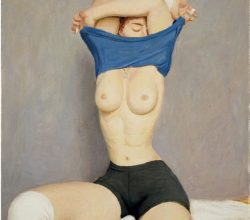
Should male artists still paint the female nude? While #metoo suggests not, is it so straightforward? One artist frets “we could be living through “a new Victorian age”. Another observes “the human psyche is not politically correct” A female artist notes “I’ve always had the sense that women must be proud to be sexual beings”. A quiz at the end of the article is revealing.
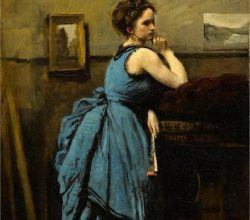
We celebrate Corot for his landscapes. In later life, and more or less in secret, he pursued a sideline – portraits of women. Why he was so reticent is unknown. “Among the most beautiful and underappreciated of the 19th century” says one critic. Degas commented: ““I believe Corot painted a tree better than any of us but still I find him superior in his figures.” More images are here.
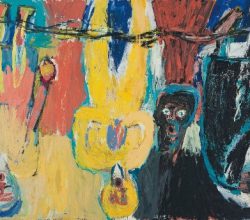
After positive reviews in Switzerland the Baselitz retrospective has opened in Washington to an absolute pasting. Decrying Baselitz’s “bloated reputation” and odd decision to display his works upside down, the writer continues: “[H]is sense of color is haphazard and his drawing weak … he has never quite managed to tie his influences … into taut and commanding art.” Ouch!
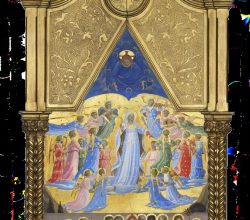
This show is a big deal. The Renaissance painter, Fra Angelico, painted four reliquaries depicting the life of the Virgin Mary. For the first time in centuries they have been reunited. “The pieces gleam with gold, ultramarine, and vermilion … they seem to pulse with centuries of accumulated attention and reverence. It’s an energy some would call holy.” Images are here.
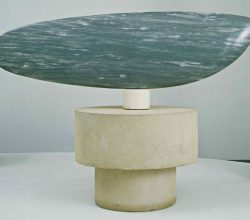
It’s odd to say Brancusi “exploded” onto the art scene in 1913. He could barely sell a work and, for decades, depended on a sole American patron. Such market indifference reflects “the extent to which Brancusi was operating wholly outside the temper of his time, including [radical] Paris.” Given his now revered stature, this is surely one of the more remarkable transformations in art history.
The Easel finishes each year by listing, from the more than 300 stories featured through the year, those that were most widely read. This newsletter features the first seven of these pieces; next week will feature another seven.

Modern Japanese architecture has international allure. It draws on ancient traditions of wooden buildings and ideas about the fluidity of internal spaces. Less obvious but not less important is ‘wabi-sabi’ – the Japanese concept of beauty. More than Greek ideals of beauty, wabi extolls restraint, simplicity – “nothing lasts, nothing is finished, and nothing is perfect”. More images are here.
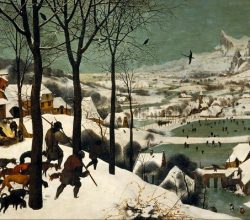
Bruegel’s paintings are so rare and fragile that a Vienna show of 30 paintings is unprecedented. He borrowed Hieronymus Bosch’s detailed style but Bruegel focused on village life and landscapes. What did he intend – morality tales, comedies or just pleasant rural scenes? “They’re mysterious and don’t give away a lot of clues.” More images are here.
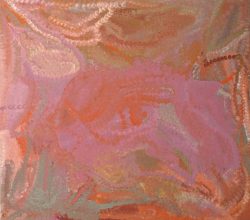
Indigenous art sometimes gets the lame description ‘outsider art’, implying it has little in common with western art. This view would have greatly surprised Picasso and Matisse, among others. So how do we describe the relationship between indigenous and western art? Morgan Meis takes a close look.
“The fact remains – a great many of the artists [including Picasso] who are celebrated in the galleries and museums of Modern art were utterly discontented with the boundaries of “the Modern,” of which they are often considered the exemplars. Fascinatingly, for our purposes, they would replace the Modern idea of art with something more akin to what the Aboriginal artist has been doing all along: making sacred and ritual objects that mediate between human being and cosmos.”
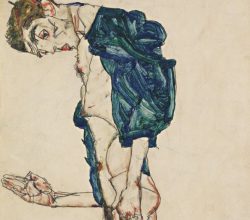
Schiele’s works still shock. They exude a sense of angst that somehow prevails over the eroticism and nudity. “Klimt [Schiele’s mentor] suffused his pictures with the heady, aphrodisiac perfume of fin de siècle Vienna, while Schiele scraped the era’s fecal underside.” More and more, says the writer, history’s judgement is appreciating the latter. More images are here.
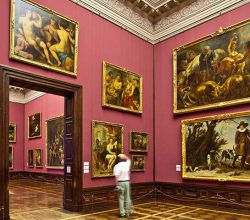
Why do we still pay attention to Old Masters paintings? There are a handful of famous names – Rembrandt, Vermeer, Velázquez, Michelangelo – toward whom adulation seems obligatory. Yet, walking the galleries of a major museum, you quickly realize there are many others. With their ornate gilded frames and often perplexing subjects, why should their works command modern attention? Indeed, why do museums continue to acquire them?
Keith Christiansen, a self-confessed addict of paintings by the Old Masters, is the John Pope-Hennessy Chairman of the Department of European Paintings at New York’s Metropolitan Museum. Recently Morgan Meis, Contributing Editor of The Easel, talked to Keith about the modern relevance of these works. Keith’s response to the topic was, well, emphatic.
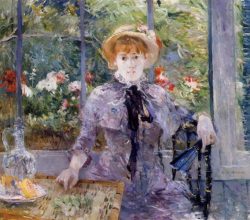
From the outset, Morisot’s work was distinctive. Her female subjects had “a profound psychological presence”, reflecting her own experience of womanhood. But she was also expressing life’s impermanence. “Her work’s lack of finish conveys, like no other Impressionist, a sense of evanescence. We do not live long”. More images are here.